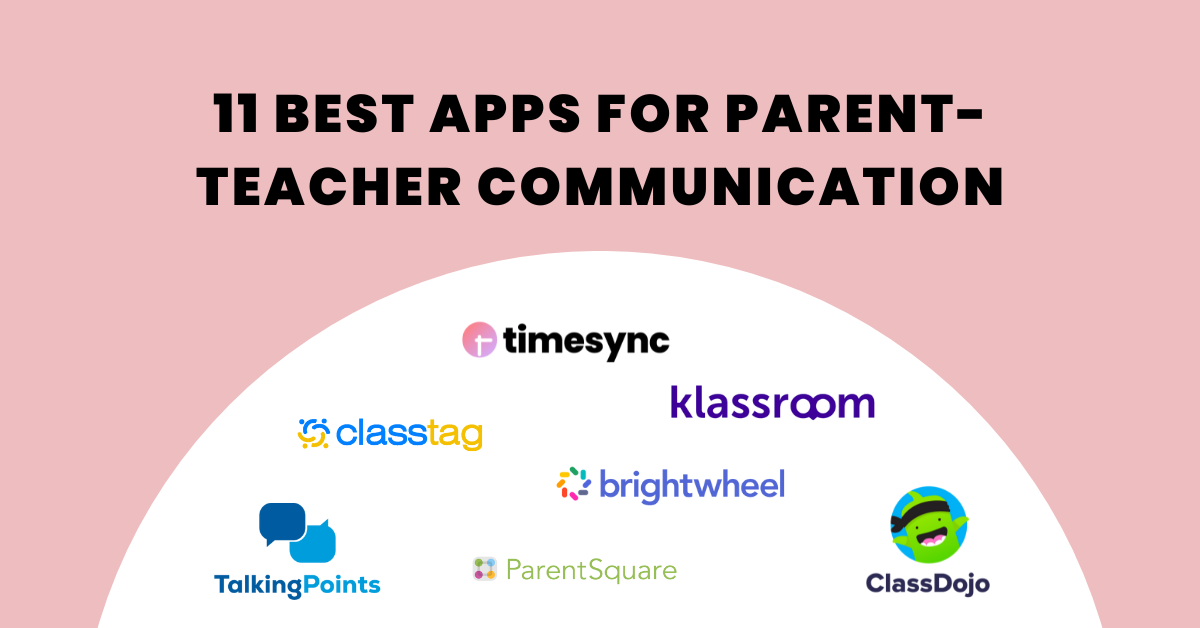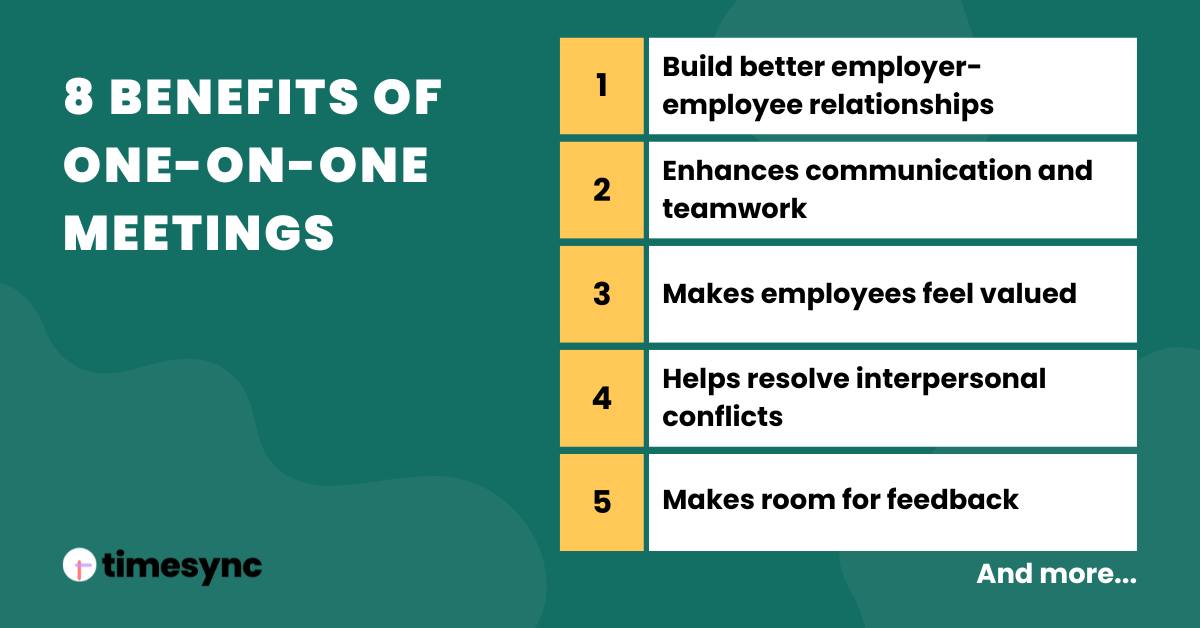




Content Writer
One-on-one meetings are a natural extension of more traditional team meetings, wherein the strategy is to have brief, targeted face-to-face meetings with every member of the team.
Here are some reasons why managers decide to have one-on-one meetings:
When implemented correctly, these brief, weekly check-ins can greatly improve employee performance, satisfaction, and organizational productivity in measurable ways.
But we feel a short paragraph doesn’t do justice to the several other benefits one-on-one meetings have on your organization.
That said, here are 8 benefits of one-on-one meetings and why they’re important. Let’s dive right in!
A study done by Gallup found that employees that regularly have a conversation with their managers are 3X more likely to be interested in their work.
But the reality is, in most companies, employees and managers do not often get the opportunity to speak privately with one another. That’s why having regular one-on-one meetings solves this issue and gives you the ability to build excellent relationships with all members of your team.
Contrary to group get-togethers, one-on-one meetings allow for more balanced and interactive discussions. Even the most reserved employees can feel comfortable enough to voice their goals, concerns, and suggestions through these private interactions.
Hosting one-on-one meetings further opens up the opportunity for employees to talk about more delicate subjects like evaluation of pay, promotion, growth opportunities, etc.
Many managers are skeptical about having one-on-one meetings to check in with employees. They think the conversations hold no substance or that there will be nothing to talk about together.
But in practice, one-on-ones make the check-in process quick, personal, and attentive.
In a group meeting, you might have a meeting about what your team is working on and then a meeting about how everyone’s doing at work overall. This means many updates are coming at you from different people with their own agendas — and it can be hard to follow everything they’re saying.
You can get more done in a one-on-one than you can in an entire group meeting because there’s no question of who’s speaking up or not being heard; there are fewer interruptions, and everyone gets to focus on what’s important to them.
A one-on-one meeting is a time when you have the opportunity to get to know your staff better.
This is especially important if you are a manager or supervisor overseeing many team members. It also helps you establish a solid communication channel to avoid any mistakes or miscommunication.
By knowing the strengths, weaknesses, hobbies, and interests of your staff, you can not only build better work teams but also get to know who will be the best for what respective work.
As employees grow more confident in their roles and the company, they’re also more likely to be willing to speak up about things that matter to them.
The best meetings are the ones that have a clear purpose, provide mutual trust and respect, and are where everyone’s opinions are heard. That’s why managers have to ensure that the meeting is productive and everyone participates in the discussion.
But the reality is that most group meetings don’t have that, instead they are dominated by one or two employees which may force everyone else to feel left out.
On the contrary, good one-on-ones are designed in a way wherein an employee leads the conversation while their manager mostly listens. As a result, employees get a sense that their opinions are valued.
One-on-one meetings are a great way to enhance an organization’s productivity. Using one-on-one meetings, you will be able to assist your team in accurately prioritizing their duties and activities.
Additionally, when your employees know that they can discuss any technicalities with their manager without any fear of being reprimanded, they are more likely to report issues that have been bothering them.
You, as a manager, can have a discussion on crucial topics, devise plans, and answer any questions they have, which will not only reduce the number of times they interrupt you during the day but also allow them to carry out everything smoothly and generate the highest possible return on their investments.
One-on-one meetings are not just about having a nice talk and getting to know each other better, but also about learning how to manage people effectively.
They have been proven to be an effective approach to demonstrate to your staff that you genuinely care about them, are willing to listen to their concerns, and want to assist them in improving.
No team is perfect, and there will often be situations where interpersonal conflicts will arise between the members. These may be hard to spot but can substantially affect their work.
When you schedule meetings with your team and ask them the correct questions, you may bring problems (like difficulties with the hiring process, tensions or conflicts among team members, challenges with productivity, inefficiencies in procedures, etc.) to light far before it is too late to find a solution to them.
When it comes to the development of their careers, employees, even though they are working primarily for the company, do have certain personal goals and expectations for themselves.
As a manager, you can’t ignore this fact — Instead, you should hold one-on-one meetings with each employee and team member. These meetings allow you to have the conversations necessary for understanding employee expectations and can be used to better align individual goals with those of the company.
By leveraging these conversations, you’ll be able to better decide what work to assign your team members that’ll not only help the company but will also aid them in progressing in their skills.
One-on-ones are just as beneficial for employers as they are for employees as they provide a way for both the employer and employees to provide valuable feedback on each other’s performances.
As a manager, gathering feedback from your team can help you gain insight into the aspects of your management style that are working well and the areas in which you can make improvements.
Similarly, sharing your honest observations and opinions about their performance with them individually may help them understand their shortcomings and in turn, strive toward helping them improve.
We hope that this article has helped you shed some light on the benefits of one-on-one meetings.
If done right, they have the potential to keep employees engaged, keep them on track to meet performance goals, help them develop their professional skills, and assist in the resolution of minor problems when they arise.
When not executed properly, they also have the potential to leave workers feeling frustrated and undervalued.

Devesh is a content writer at Novocall.
Related articles
Subscribe to our blog
Get insights & actionable advice read by thousands of professionals every week.